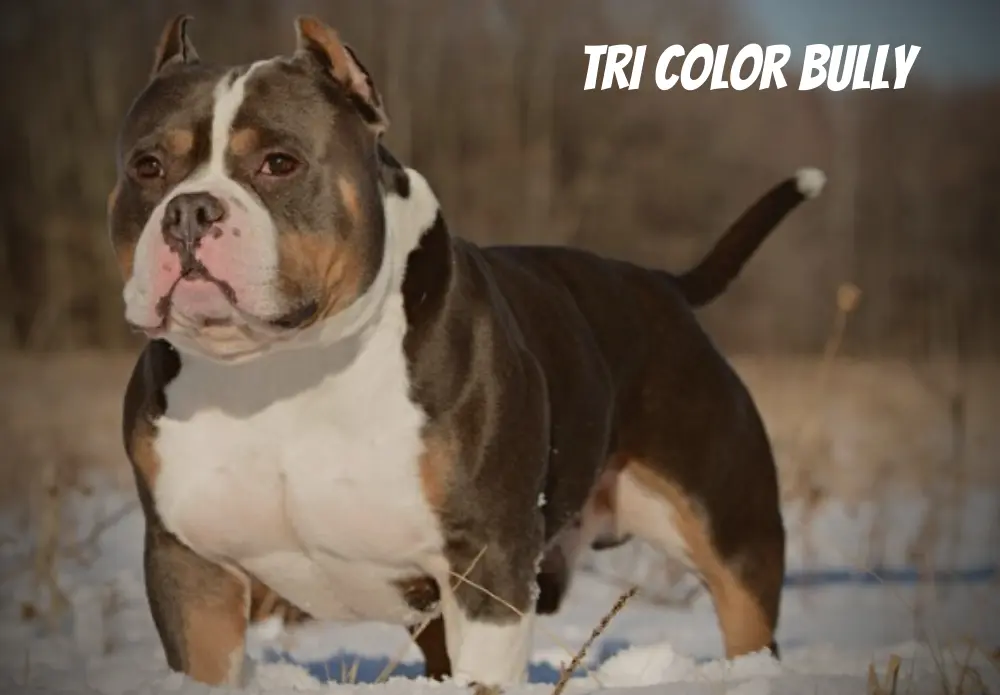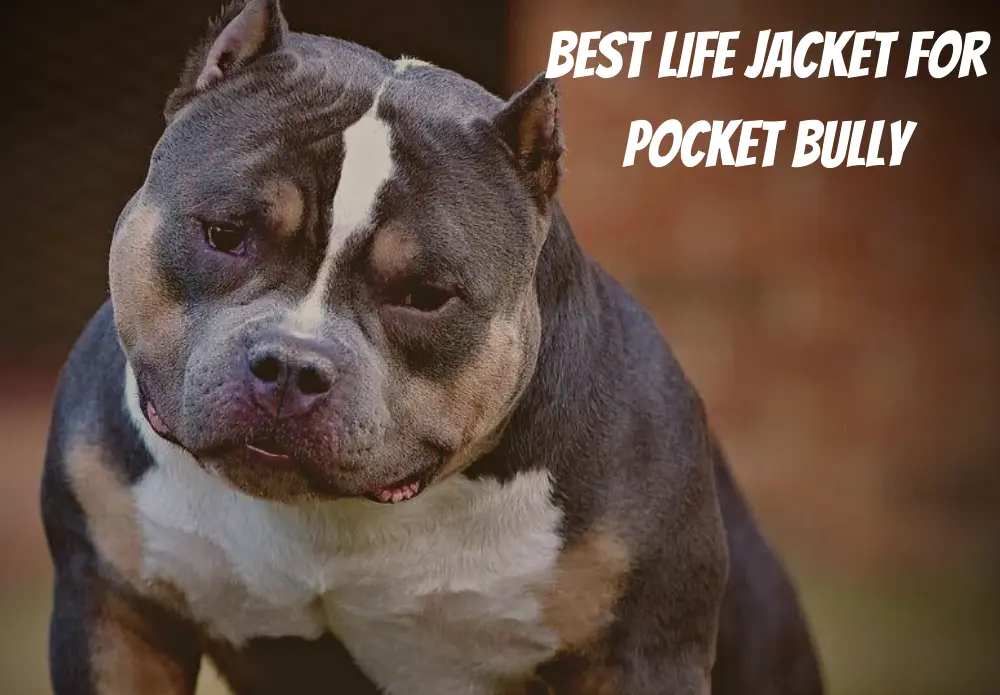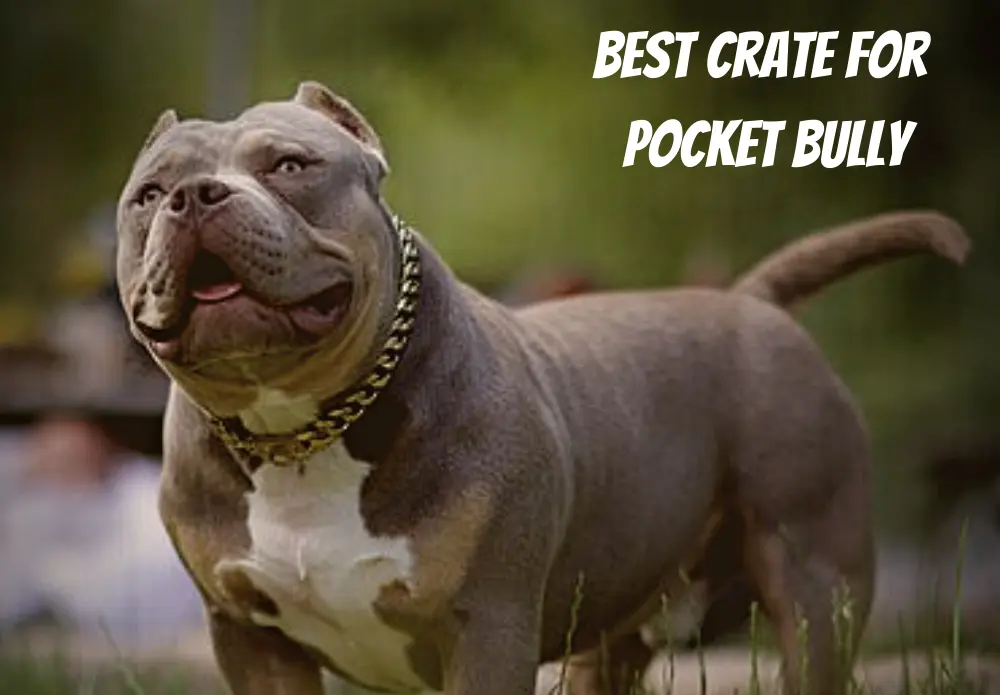In contrast to the typical one or two colors found in most Bullies, the Tricolor Bully has three distinct colors in its coat. Tan and white will be two of the colors found. However, the foundation color can change.
Thanks to three different colors, the tri-color bullies can come in various color combinations and have many variants.
What is a Tri-Colored Bully?
The word “tri-colored” implies the dog’s coat color, often a combination of three colors: black, white, and brown or red. However, to produce Tri Color Bullies, the recessive Tan Point gene must be present in both parents.
The base colors can be chocolate, black, blue, and lilac. But it is important to note that the dilution, intensity, or pattern genes like merle, brindle, and piebald can affect the base color.
Other than the color difference, there are no differences between regular bullies and tricolor bullies. Both bullies have the same temperament and loving character filled with loyalty.
What are the Variants of Tri Color Bully?
Every combination variant of the tri-color bully is different from the other and unique in its way. No two puppies will have the same pattern, not even in the same litter.
There are many possible combinations of tri-color bullies, so for ease of understanding, they are divided based on the base color.
Black Tri-Color Bully
Getting started with the most typical tri-colored Bully would be best. It’s not a typical Bully color or pattern; it’s just a base color that pops up quite a bit.
In short, a black tri is characterized by a white chest, tan spots above the eyes, and black fur covering the legs’ back, sides, and outer portion.
Chocolate Tri Bully
It’s common for tri-color bullies to have a chocolate base color. Chocolate tri bully term is used for bullies with a coat that has a brown or chocolate-colored base with white and black patches.
A chocolate tri-color bully’s coat may have various patterns and color distributions according to the individual. It’s crucial to understand that “chocolate tri-color bully” refers to the shade of an American Bully with tricolor markings rather than a different dog breed.
Blue Tri-Color Bully
The dilute gene causes the black to appear blue despite it being gray. With a blue base coat, there will be other colored patches on the chest, muzzle, and legs.
A blue tri bully needs recessive gene combinations that are difficult to achieve and particularly hard to breed.
Red Tri-Color Bully
The red recessive genes make the coat appear reddish or brown. The patches of different colors appear the same as blue tri bully.
Lilac Tri-Color Bully
The lilac tri is the rarest tri bully. For comparison, the blue tri bully is one of the rarest bullies, and lilac is even rarer than that.
The process behind the color is precisely the same, though dilute chocolate or brown becomes liver, and it combines with the dilute black (blue) to achieve the “lilac” shade.
Ghost Tri-Color Bully
The absence of the dominant black gene causes only the tips of a dog’s hair to become dilute, giving it a “ghostly” transparent appearance.
Brindle Tri-Color Bully (Trindle)
This combination of the brown or chocolate base brindle pattern with dark stripes and tan point gene is perfect looking but equally rare too. This combination is most common in American Pitbull Terriers but can also be seen in American Bullies.
Piebald Tri-Color Bully
Commonly known as the tuxedo pattern, a combination of white and black characterizes the piebald. In tri color combinations, the markings come in a third color.
Champagne Tri-Color Bully
The tan base color is slightly diluted and appears to be “champagne” in color. It is one of the more unique tri-color possibilities but not as uncommon as blue or lilac.
Buckskin Tri-Color Bully
Buckskin is a tan with yellow highlights throughout the base color. A tri American Bully with this color combination is frequently misidentified as an American Pitbull Terrier.
Fawn Tri-Color Bully
This tri-color Bully has a brownish coat with white marks on the head, chest, and legs.
What is a Tri Merle Bully?
Merle Bullies have a distinctive pattern in which patches of fur are mottled and varied colors. Because this can appear on any bully color, it adds a third color where there would typically be two.
Tri Merle Bullies are not considered actual Tri colors. Merle is associated with several health concerns and is thus not recognized by the AKC. Because of these added health issues, prudent breeders do not breed for the presence of this.
Are Tri-Color Bullies Rare?
Yes, they are uncommon, but it depends on your desired combination. Some American Bully puppies with tri-color coats, such as the roan or piebald tri Bully, will develop the pattern with age.
This means you’ll know what kind of Bully you’re dealing with. If the Bully breeder does a genetic test or knows the genetic results of the puppy’s parents, you will know what type of pattern your tricolored puppy will have.
Blue, lilac, ghost, and tri-merle are the most unusual. If you locate one, consider yourself fortunate.
Make sure you do your homework on any bully breeder who claims to have them because these tri-colors, particularly the tri-merle, are frequently bred unethically, and their origins can be suspect.
How Much is A Tri-Color Bully Worth?
The cost of a Tri-Color Puppy varies depending on a number of things. These include size, build, bloodline, and the colors that make up the Tri pattern. The table below will provide a rough idea of what you could expect to pay when buying from a reputable breeder.
| Tri-Color Variant | Puppy Price |
| Black Tri Bully | $4,000 – $6,000 |
| Choco Tri Bully | $5,000 – $7,000 |
| Blue Tri Bully | $5,000 – $7,000 |
| Lilac Tri Bully | $8,000 – $12,000 |
| Brindle Tri Bully | $6,000 – $8,000 |
| Piebald Tri Bully | $6,000 – $8,000 |
| Ghost Tri Bully | $10,000 – $15,000 |
How Big Are Tri-Color Bullies?
The cost of a Tri Color Puppy varies depending on several things. These include size, build, bloodline, and the colors that make up the Tri pattern. The table below gives a rough idea of what you could anticipate paying from a reputable breeder.
| Size of Bully | Height | Weight |
| Pocket Bully | 14 – 17 Inches | 20 – 65 Pounds |
| Classic Bully | 17 – 20 Inches | 50 – 70 Pounds |
| Standard Bully | 17 – 20 Inches | 65 – 85 Pounds |
| XL Bully | 20 – 23 Inches | 85 Pounds + |
The other types of Bullies you may see are
American Bully XXL
As the name implies, this is a larger version of the American Bully. This refers to any Bully who is taller than 23 inches. Due to further health issues, this is still unrecognized.
Weight gain owing to size puts a lot of extra pressure on joints and organs, which can lead to a decline in quality of life.
Micro/Exotic Bully
Bullies that are smaller in stature than the Pocket Bully. Like the Pocket Bully, these result from cross-breeding, usually with the Patterdale Terrier.
Micro Bullies have additional health issues due to their physical size not being appropriate for their demands. This, once again, frequently leads to additional health problems and a shortened lifespan.
Extreme Bully
Extreme refers to their physical appearance rather than their size. They can be made in any size, commonly called Micro/Pocket. As the name implies, it is more muscular with a giant head, shoulder, and neck than a standard Bully.
FAQs – Frequently Asked Questions
What Are the Different Color Bullies?
American Bully colors include black, white, grey, brown, blue, tan, fawn, red, and piebald. These dogs are usually a two-color mix; however, the American Bully can also be tri-colored.
What is a Rare Tri Color Pitbull?
Blue tri and Lilac Tri colored pit bulls are some of the rarest color combinations. These colors are highly sought after among Bullies and Pibulls due to their unique looks and rarity.
What Are the 5 Bully Breeds?
The phrase “bully breed” refers to a group of terrier-type dogs, including American Pit Bull Terriers, Bull Terriers, Bullmastiffs, Staffordshire Terriers, Boston Terriers, Boxers, and French Bulldogs.
Conclusion
Tri color Bullies are unique and rare but not unusual or weird. They are beautiful and unique dogs with positive personalities. You rarely find any dog better than them, as they can be found in any color and size you like.
American Bullies are specifically bred to be family dogs; their coat color does not affect their temperament. You will find tri color bullies to be loving and loyal dogs with high intelligence.






